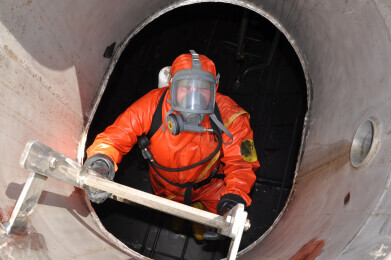Environmental laboratory
How is radioactive nuclear waste managed?
Jun 20 2024
Nuclear energy waste management is a complex and highly debated topic, yet significant strides have been made in its safe and effective handling. The primary challenge lies in managing high-level radioactive waste (HLW), which, although only a small fraction of the total volume, contains the majority of the radioactivity produced by nuclear power plants.
How is low-level radioactive waste managed?
Nuclear waste is broadly categorized into low-level waste (LLW), intermediate-level waste (ILW), and high-level waste (HLW). LLW and ILW, which constitute about 99% of the volume but only 5% of the radioactivity, are generally more manageable. 1CITATION They can be compacted, incinerated, and disposed of in near-surface facilities. There are several such facilities in the United States, including sites in Texas and Utah, where waste is securely stored and monitored.
How is high-level radioactive waste managed?
HLW, which includes spent nuclear fuel, is much more challenging due to its high radioactivity and long-lived isotopes, such as plutonium-239 with a half-life of 24,000 years. Managing HLW requires sophisticated methods to ensure long-term safety and environmental protection. Currently, spent fuel is stored temporarily in spent fuel pools and dry cask storage at reactor sites. These methods are considered safe for the short to medium term.
Why deep geological repositories are best practice
The consensus among scientists is that deep geological repositories (DGRs) offer the best long-term solution for HLW. These repositories involve burying waste deep underground in stable geological formations. This method relies on multiple barriers, both natural and engineered, to contain and isolate the waste from the biosphere. Countries like Finland and Sweden are at advanced stages of developing DGRs, while the United States has had a contentious history with its Yucca Mountain project, which has faced political and public opposition despite significant investment.
Despite the technical feasibility of geological disposal, implementing these solutions faces several hurdles. Public concerns over safety, environmental impact, and transportation risks often hinder the establishment of permanent disposal sites. For example, the Yucca Mountain project was halted largely due to such opposition and concerns about seismic activity in the area. Developing and maintaining high-level waste repositories is expensive and technologically challenging. Issues such as the durability of storage materials and the long-term stability of geological formations must be addressed. As permanent solutions are being developed, interim storage methods like dry cask storage have proven effective. These methods provide safe storage for several decades, buying time for the development of long-term solutions.
Nuclear energy waste is manageable with current technologies and methods, although significant challenges remain, particularly for HLW. Effective management requires a combination of temporary and permanent solutions, robust political will, public acceptance, and ongoing technological innovation. With continued progress and international cooperation, it is feasible to safely manage nuclear waste, ensuring the benefits of nuclear energy can be harnessed without compromising environmental and public health.
Digital Edition
IET 35.2 March
April 2025
Air Monitoring - Probe Sampling in Hazardous Areas Under Extreme Conditions - New, Game-Changing Sensor for Methane Emissions - Blue Sky Thinking: a 50-year Retrospective on Technological Prog...
View all digital editions
Events
May 06 2025 Nuremberg, Germany
May 10 2025 Karachi, Pakistan
May 11 2025 Vienna, Austria
May 11 2025 Seoul, South Korea
Salon Analyse Industrielle & Instrumentation
May 14 2025 Paris, France






.jpg)


_(4427399123)-(2).jpg)









